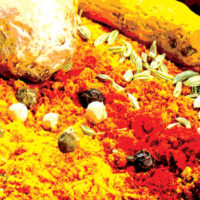The Cannabis Conundrum: Is Grass GRAS?

Food processors and regulators at the state and local levels are facing a situation that people never envisioned a mere 10 years ago. And that situation is legalization of marijuana and how it will be dispensed. Marijuana advocates in Washington and Colorado, two states that have legalized the substance, envision that pot will be sold in different foods: cookies, brownies, cakes, beverages and other vehicles. Since the U.S. Justice Department is not amenable to enforcing federal law with regards to marijuana, the burden of enforcement is in limbo. Should it be handed over to the states? In fact, there have been ongoing debates between the different government branches on several related issues. Among the questions that have been debated are: “Should operations producing and dispensing marijuana be treated as food processors?” or “Should such operations be ignored and be allowed to operate without regulatory oversight?”
Who Will Regulate?
Reports from Washington State indicate that potential processors of marijuana-containing products are lining up to enter the field. The question of enforcement has been answered there. Discussions between the governor and the Washington State Department of Agriculture, the agency responsible for monitoring the state’s food processors, have determined that this new industry must be regulated and that foods with marijuana should be treated like other foods, that is, they are subject to the same regulatory requirements. Now, this could well be a challenge for both processors and regulators. Why? Many of the operators that want to get into producing foods incorporating marijuana are not experienced food processors. They don’t know about food safety, sanitation, vendor quality or the myriad other things a processor must know. These people will need to be trained in all these areas and then they will need to put this training into practice. Putting these elements into actual practice means developing, documenting and implementing procedures in each and every one of these areas. The role of public health officials is obviously to protect the public health, and there are basic rules under which food processors must operate. These potential new operators need to follow all the rules and regulations that the state’s current processors follow.
How Will Foods Containing Marijuana Be Labeled?
Processors selling foods and beverages containing marijuana will have to label what they are producing. Their products will require an ingredients statement and a nutrition facts statement, but will the label require a statement of how potent the marijuana in that item is?
Let’s first look at the ingredients statement. Foods must be labeled as defined in the food labeling regulations. Ingredients must be listed in order of prominence, so the ingredients statement must contain something that defines the marijuana. Will the proper label be “marijuana” or should it be “cannabis?” One doubts that words such as “ganja,” “pot,” “weed,” “wacky tabaccy,” “hooch” or any of the many other names for marijuana will be acceptable. Therefore, regulators will need to establish an acceptable name. Producers can’t mislead the public by using a name that everyone does not understand.
Should the future sellers be even more honest with the public? Instead of labeling marijuana as “marijuana,” maybe they should label it “marijuana containing tetrahydrocannabinol (THC),” or trans-Δ9-tetrahydrocannabinol. Of course, even if this is more truthful, it might frighten one or more of the many persons who are frightened by food chemicals. These are people who are frightened by very safe food additives such as sodium benzoate, potassium sorbate or titanium dioxide. Scary, eh? Having to use such verbiage would not constitute a “clean label,” something many processors are striving to develop.
Are there any calories in marijuana? Someone will need to test this. If a one-ounce brownie has a gram of pot in it, does that contribute to the overall calories? This will need to be determined.
Lastly, should sellers of foods containing marijuana (or marijuana derivatives) have to add a statement to the food label clearly stating how much THC the food contains or how strong a single serving of the food or beverage in question is? Alcohol, whether beers, wines or hard liquors, must clearly state the percentage of alcohol by volume, or proof, of the product. It would seem logical that similar regulations should be established for foods containing marijuana or its derivatives. The bottom line is that consumers need to be aware that one cookie or brownie may give them a buzz and that consuming more might not be a good idea.
Should there be something on the label, or more appropriately the front panel, that indicates that this food or beverage contains pot? The last thing one wants is school kids bringing such stuff to school. A clear label (a marijuana leaf or buds) would clearly identify the food as containing marijuana or a derivative.
Of course, making this a requirement would entail several other mandates and add extra costs to the processor’s operation. Government would need to establish an official and recognized method for testing potency and, hopefully, establish a program to accredit laboratories capable of conducting these analyses. The states of Washington and Colorado should be establishing such programs already. A white paper titled “Cannabis Testing Labs: Standards and Accreditation,”[1] makes the point that there is, at the moment, no standard method of analysis. For regulatory and legal purposes, it is expected that there should be an established official method through the Association of Official Analytical Chemists or another recognized organization.
Who will be responsible for conducting the potency tests? Should the supplier or grower of the marijuana be required to test the potency of each lot of pot or marijuana derivative or should that task be the purview of the processor? This will, of course, increase costs for whoever is deemed responsible. There is no quick test, so methods employing gas chromatography or high-pressure liquid chromatography will probably be adopted. This will need to be established since consumers have a right to know.
And one more point: Will marijuana need to be produced by a certified organic grower if a processor wishes to produce an organic food or beverage?
Is Marijuana, or THC, a GRAS (Generally Recognized as Safe) Food Additive?
Now we come to a question that seems to have been ignored. Is THC a GRAS substance? The process for gathering data and submitting a petition for GRAS status is long and expensive. Should not marijuana or THC be deemed GRAS before it is used in foods and beverages? At the moment, it does not appear to have been deemed GRAS. The U.S. Food and Drug Administration has established programs to accelerate the process for submitting and evaluating applications for GRAS status. However, since the federal government has washed its hands of enforcing drug laws pertaining to marijuana at the state level, it would probably punt on reviewing a GRAS status submission for THC and/or marijuana.
This may end up being a mistake in the long run. Companies have spent piles of money and much time to submit applications. Allowing such a compound to be used in foods without an official evaluation may raise eyebrows throughout the industry.
So the question remains as to whether marijuana or its derivatives are indeed GRAS substances.
Will Obesity Be an Issue?
One cannot escape the talk on how obesity is epidemic in this country. Will dispensing marijuana in the form of snacks be a good idea? One of the known issues among those who partake of marijuana is a symptom known as the “munchies.” Just what people need: an uncontrollable urge to devour vast quantities of salty snacks or sweets. While more whimsy than science, perhaps the ramifications of legalizing marijuana were not fully considered.
What Should Be Done?
One of the corollaries to Murphy’s Law is “There is never time to do it right, but there is always time to do it again.” So states that elect to legalize marijuana should take their time and do it properly. The following summarizes the issues that need to be addressed:
• Ensure producers of foods containing marijuana or its derivatives are proper food processing facilities: The public must be protected, so anyone who wishes to produce foods or beverages with marijuana must adhere to current regulations governing the production of foods.
• Raw materials security: Marijuana must be properly stored in locked facilities accessible to authorized personnel only, and its usage as an ingredient must be properly documented. Bottom line is that there will be a great temptation to pilfer.
• Official method of analysis: An official and recognized method or methods of analysis for foods and marijuana or its derivatives must be developed so processors, sellers and consumers know not only what they are buying but also how strong it is.
• Certified testing laboratories: Testing of foods, beverages and raw materials must be done in laboratories that have been certified by the state. Part of the certification process must be protection and/or proper disposal of standards and foods that are tested.
• Proper labeling of strength or dosage: Any product containing marijuana or its derivatives will have to be labeled in some way that defines how potent that item is. Alcoholic beverages use percent alcohol, or proof. How does one label a beverage containing a marijuana derivative?
• Clear identification of foods or beverages containing marijuana or its derivatives: Any food or beverage containing marijuana must be clearly identified. The ingredients statement is inadequate.
• Regulations limiting its use to adults: The states that have legalized marijuana or are looking at its legalization must limit its use to adults. The legal drinking age is 21. Shouldn’t the same criteria be applied to pot?
It will be a challenge to do things properly, but expending the time and effort to build a program to protect consumers, allow for industry growth and encourage people to follow the rules is essential. One way to address these issues would be for the federal government to legalize marijuana but make sure that these other questions are properly addressed before finalizing such a law.
Richard F. Stier is a consulting food scientist and an editorial adviser to Food Safety Magazine. He can be reached at rickstier4@aol.com.
Reference
1. lcb.wa.gov/publications/Marijuana/BOTEC reports/2b_Accrediting_Labs_Final_10_15_13.pdf.
>
Looking for a reprint of this article?
From high-res PDFs to custom plaques, order your copy today!








